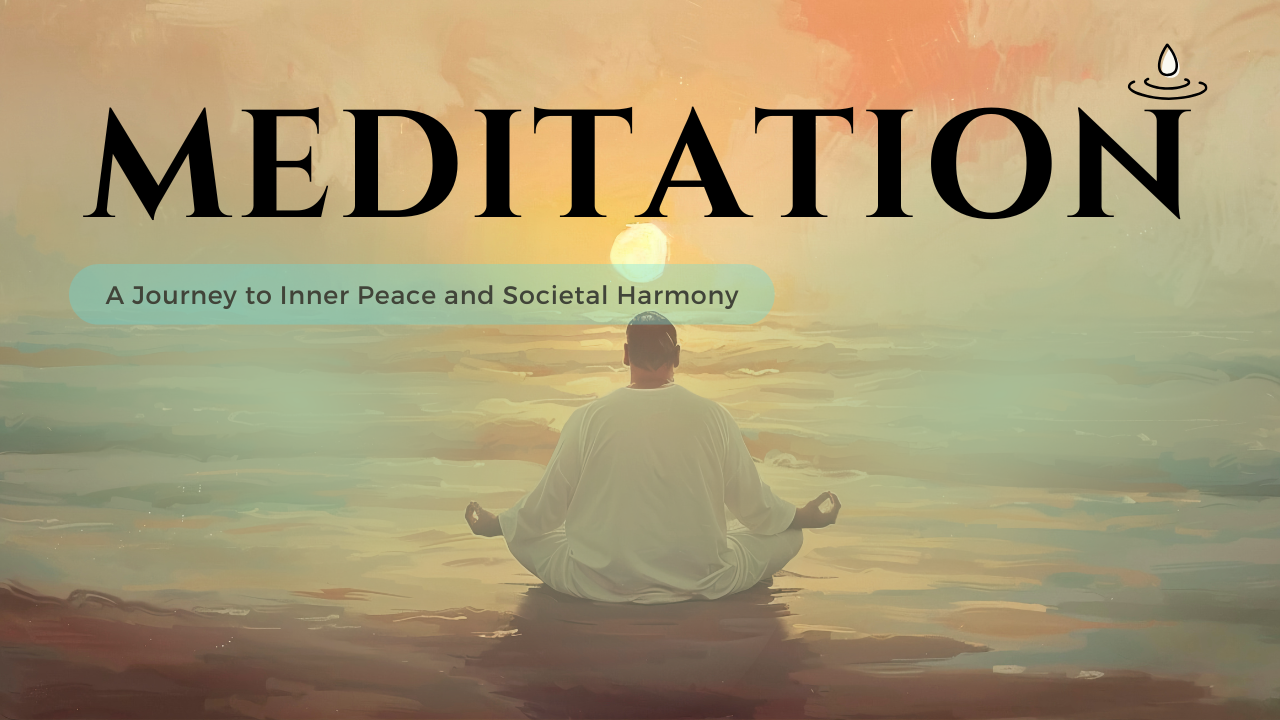Antimicrobial Resistance: A Global Threat to Health and Society
Introduction – Antimicrobial Resistance
Imagine a world where simple infections become life-threatening, and surgeries or cancer treatments become impossible due to the lack of effective medicines. This alarming scenario could become a reality due to antimicrobial resistance (AMR). AMR is when microorganisms such as bacteria and viruses evolve to resist medicines designed to kill them, like antibiotics. This means treatments for diseases we once controlled are no longer effective.
The United Nations (UN) High-Level Meeting (HLM) on September 26, 2024 on AMR called it one of the most significant global health threats of the 21st century. The World Health Organisation (WHO) has also declared AMR a top health threat. AMR is not just a health issue but a challenge that affects economies, agriculture, and the environment. If left unchecked, AMR could set us back decades in healthcare, resulting in unimaginable consequences. This essay analyses the global impact of AMR, the efforts being made to fight it, and the challenges we must overcome. It also highlights the urgent need for cooperation and innovation to tackle this growing threat.
What is AMR and Why Does It Matter?
Antimicrobial resistance happens when bacteria, viruses, fungi, or parasites develop the ability to resist the drugs meant to kill them. Overusing antibiotics, misusing medicines, and poor hygiene practices are major causes of AMR. For instance, when antibiotics are overused in humans or animals, bacteria adapt to survive these drugs, making the antibiotics useless.
AMR is sometimes called the “silent pandemic” because it is spreading rapidly but does not get as much attention as other global issues. AMR already causes around 1.5 million deaths annually. By 2050, experts predict that nearly 39 million people could die because of drug-resistant infections.
Moreover, AMR threatens many advances in medicine. Organ transplants, cancer treatments, and even childbirth rely on antibiotics to prevent infections. Without effective drugs, these procedures could become extremely risky or even impossible. The situation is so severe that WHO has included AMR among the top ten threats to global health.
Global Efforts Against AMR
The UN’s HLM on AMR in 2024 marked a turning point in the global fight against AMR. Leaders committed to reducing AMR-related deaths by 10% by 2030. Another goal is to gather $100 million in funding to support global efforts. However, these commitments face challenges such as insufficient funds and a lack of specific plans for key sectors like agriculture and the environment.
Several global frameworks already exist. For example, WHO launched the Global Action Plan on AMR in 2015, encouraging countries to work together. Regional organisations like the European Union (EU) and the African Union (AU) have also created strategies to address AMR. However, implementation remains uneven, especially in low- and middle-income countries (LMICs), where resources are limited.
The Global AMR Challenge is another effort to bring countries, organisations, and private companies together to address this crisis. This initiative encourages nations to create their own National Action Plans (NAPs), which focus on reducing the misuse of antibiotics and increasing access to necessary medicines. However, only 10% of these plans are fully funded, showing the gap between commitments and reality.
Impact of AMR
Human Health: AMR’s effects on human health are devastating. Without effective antibiotics, infections that were once easily treatable become deadly. For example, in India, around 58,000 newborns die each year from sepsis caused by drug-resistant bacteria. In Africa, hospitals often lack proper diagnostic tools, leading to overuse or misuse of antibiotics, worsening the problem. AMR also complicates medical procedures like surgeries and cancer treatments. In the United States, one in seven infections associated with medical devices or surgeries involves drug-resistant bacteria. This increases healthcare costs and mortality rates.
Economic Consequences: The economic impact of AMR is enormous. The World Bank estimates that AMR could reduce the global economy by up to $99 trillion by 2050. This includes direct costs like hospitalisation and indirect costs like job losses due to illnesses. Unlike economic crises that recover over time, AMR could cause long-lasting damage. For LMICs, the economic consequences are particularly harsh. In some regions, GDP losses due to AMR could reach up to 5%. These nations already struggle with other health challenges, and the added burden of AMR could worsen poverty and inequality.
Sector-Specific Actions Against AMR
Human Health: In healthcare, one major goal is to ensure 70% of antibiotics used globally come from WHO’s “Access” group by 2030. These are antibiotics for common infections that are less likely to cause resistance. Countries like the Netherlands have achieved this by running public awareness campaigns and strict antibiotic rules. Another focus is infection prevention and control. Simple measures like handwashing and sanitation can prevent infections and reduce the need for antibiotics. For instance, a hospital in Vietnam reduced infections by 36% through a hand hygiene program.
Agriculture and Animal Health: Agriculture plays a significant role in AMR because 73% of antibiotics worldwide are used in animals, often to promote faster growth. Countries like Denmark have shown that reducing antibiotic use in livestock is possible. Denmark cut antibiotic use in animals by 49% between 1994 and 2015 without harming production. In contrast, countries like India, which is a major producer of milk and poultry, still allow antibiotics for growth promotion. Strengthening regulations and providing alternatives, like vaccines for animals, can help reduce reliance on antibiotics.
Environmental Impact: The environment is another key area of concern. Antibiotics often end up in soil and water through waste from pharmaceutical factories or farms. Poorly treated sewage is a major source of AMR, especially in countries where untreated wastewater is used for farming. Countries like Sweden have introduced environmental standards for pharmaceutical production, ensuring that waste does not contaminate the environment. Expanding such programs globally can help tackle AMR at its source.
Challenges in Fighting AMR
Funding Gaps: One of the biggest challenges is funding. While the UN aims to raise $100 million, this amount is far less than what is needed. Africa alone requires $2–6 billion annually to combat AMR effectively. Many LMICs struggle to fund even basic healthcare, let alone advanced AMR programs.
Research and Development: Pharmaceutical companies are reluctant to invest in new antibiotics because they are expensive to develop and not very profitable. Between 2017 and 2023, only 13 new antibiotics were approved globally. To encourage innovation, governments and organisations need to provide incentives like grants or guaranteed purchase agreements.
Balancing Access and Excess: In LMICs, many people lack access to essential medicines, while in high-income countries, antibiotics are often overused. For example, in some African countries, only 61% of essential antibiotics are available in public health centres. At the same time, over-the-counter antibiotic sales in countries like Vietnam lead to overuse, driving resistance.
Innovations and Future Directions: To combat AMR, innovation is essential. Scientists are researching new antibiotics and alternative treatments like bacteriophage therapy (viruses that attack bacteria) and CRISPR technology (gene-editing tools to target resistant bacteria). Rapid diagnostic tests can also help doctors determine when antibiotics are needed, reducing unnecessary use. Global partnerships like CARB-X (Combating Antibiotic-Resistant Bacteria Accelerator) support small companies working on innovative solutions. Governments must also step up by funding public research and ensuring new medicines are affordable and accessible.
Education and Awareness: Public awareness is critical to fighting AMR. Many people misuse antibiotics because they do not understand the risks. For example, they may stop taking antibiotics as soon as they feel better or use leftover medicine without consulting a doctor. Education campaigns targeting the public, healthcare providers, and farmers can promote responsible use. The success of past public health campaigns, like the polio eradication initiative, shows that awareness and political will can make a big difference. AMR campaigns must be long-term and involve feedback to ensure people change their behaviour.
Role of the One Health Approach
The “One Health” approach connects the health of humans, animals, and the environment. It stresses that controlling antibiotic use in animals not only helps livestock but also prevents resistance spreading to humans. Unfortunately, many countries focus mainly on human health and ignore agriculture and the environment in tackling antimicrobial resistance (AMR). For instance, action plans often lack measures to address the role of farming or waste management in spreading resistance. To truly combat AMR, collaboration across sectors is essential. Governments, farmers, and health workers must work together to reduce antibiotic misuse. This comprehensive strategy ensures better health for people, animals, and ecosystems. Following a “One Health” method is key to creating lasting solutions for AMR challenges.
Conclusion
Antimicrobial resistance is a complex and urgent crisis, but it is also a solvable problem. The UN’s commitments provide a strong foundation, but they must be matched by action. Governments, organisations, and individuals must work together to increase funding, encourage innovation, and improve access to healthcare.
If we fail to act, AMR could reverse decades of medical progress and cost millions of lives. However, by adopting a comprehensive, One Health approach, the world can turn the tide on AMR and protect future generations from this silent pandemic. The time to act is now.
Subscribe to our Youtube Channel for more Valuable Content – TheStudyias
Download the App to Subscribe to our Courses – Thestudyias
The Source’s Authority and Ownership of the Article is Claimed By THE STUDY IAS BY MANIKANT SINGH






